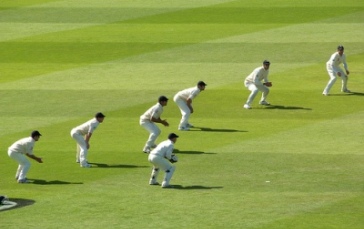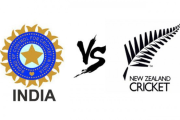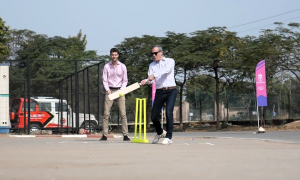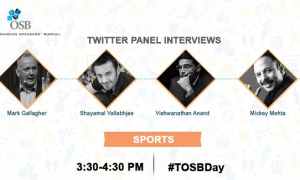With the 2000th Test fast approaching, the obituary of Test cricket has been written so often that it comes as a surprise to realize that we are on the brink of the 2000th match. In the first 100 years, since England played Australia in the inaugural Test in 1876-77, there were as many as 803 Test matches. The period saw two World Wars, the Test careers of such as W G Grace and Don Bradman, the birth of one-day internationals, and the banning of South Africa for that country’s apartheid policy. Sri Lanka, Bangladesh and Zimbabwe were yet to make their debut.
The first Test between England and India starting next Thursday (21 July) will be the 2000th Test in cricket’s colorful history. By coincidence, the above 2000th Test will also be the 100th Test between England and India. They had played their inaugural Test also at Lord’s, 79 years ago, from June 25-28, 1932. In 1985, The 1000th Test match was played in Hyderabad (Pakistan) between the hosts and New Zealand. It was memorable for a century in each innings by Javed Miandad.
That was just 27 years ago. So it took more than 108 years to complete the first 1000 Tests. But it has been less than 26 years to complete the next 1000. That is, four times quicker. That there were over 3000 one-day internationals besides led to the question: were there any off days at all? Are we playing too many Tests? Can the interest in cricket be revived if less number of Tests are played every year?
Below are listed the landmark Tests:
First Test: Australia vs. England, Melbourne, March 15-19, 1877. Australia won by 45 runs.
Centenary Test (Test number 803): Australia vs. England, Melbourne, March 12-17, 1977. Australia won by 45 runs – the coincidence of the century.
100th Test: Australia vs. England, Sydney, February 21-27, 1908. Australia won by 49 runs.
500th Test: India vs. Pakistan, Madras (now Chennai), January 13-18, 1960. Drawn.
1000th Test: Australia vs. West Indies, Melbourne, December 22-27, 1984. Drawn.
2000th Test: England vs. India, Lord’s, London, next week, July 21-25, 2011.
What is it about Test cricket that makes it so special? It takes five days to complete, teams break for lunch and tea, and batsmen have been known to play on for 999 minutes, as Hanif Mohammed once did against the West Indies while his eyebrows nearly fell off. It is no coincidence that this format is known as ‘Test’ cricket. It is a test of a player’s temperament as much as his skill, a test of his character as much as ability. It is not ‘cricketainment’, and it continues to thrive in the age of ‘cricketainment’.
In 135 years, Test cricket has resisted change in much the same manner as the other two forms have welcomed it. This is the game’s greatest blessing. While the oldest format (of the three) retains its quirkiness and illogicality in the modern world, refusing to be commodified and resistant to ‘cricketmania’, the sport itself has two other versions that can accept and glorify all manner of innovations. One-day cricket and T20 have enabled Test cricket to keep its pristine qualities, and that is a boon.
Sachin Tendulkar is one century away from reaching 100 international tons and has an opportunity to achieve that on a historic occasion at Lord’s, where India and England will play the 2000th Test later this month. Tendulkar, who has 51 centuries in Tests and 48 in ODIs, however, said the landmark wasn’t preoccupying his build-up to the game. Now if Sachin Tendulkar gets a century, then everything will change. It will be his 100th in international cricket – and you can’t ask for a better setting.
Tags: Cricketainment, Cricketmania, England, India, Lords, Sachin Tendulkar, Test Cricket, Test Match, Tests













